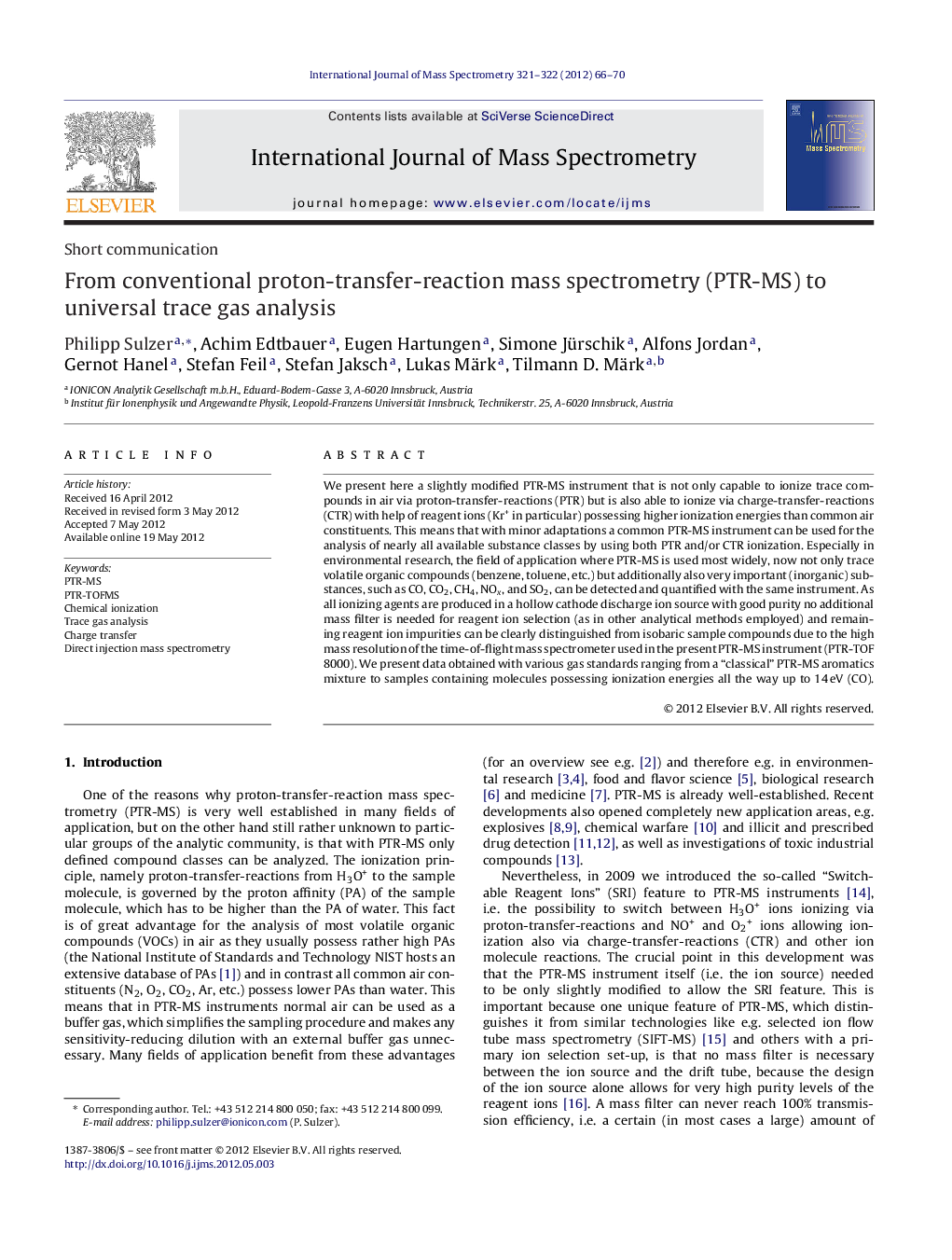| کد مقاله | کد نشریه | سال انتشار | مقاله انگلیسی | نسخه تمام متن |
|---|---|---|---|---|
| 1193511 | 1492292 | 2012 | 5 صفحه PDF | دانلود رایگان |

We present here a slightly modified PTR-MS instrument that is not only capable to ionize trace compounds in air via proton-transfer-reactions (PTR) but is also able to ionize via charge-transfer-reactions (CTR) with help of reagent ions (Kr+ in particular) possessing higher ionization energies than common air constituents. This means that with minor adaptations a common PTR-MS instrument can be used for the analysis of nearly all available substance classes by using both PTR and/or CTR ionization. Especially in environmental research, the field of application where PTR-MS is used most widely, now not only trace volatile organic compounds (benzene, toluene, etc.) but additionally also very important (inorganic) substances, such as CO, CO2, CH4, NOx, and SO2, can be detected and quantified with the same instrument. As all ionizing agents are produced in a hollow cathode discharge ion source with good purity no additional mass filter is needed for reagent ion selection (as in other analytical methods employed) and remaining reagent ion impurities can be clearly distinguished from isobaric sample compounds due to the high mass resolution of the time-of-flight mass spectrometer used in the present PTR-MS instrument (PTR-TOF 8000). We present data obtained with various gas standards ranging from a “classical” PTR-MS aromatics mixture to samples containing molecules possessing ionization energies all the way up to 14 eV (CO).
Figure optionsDownload high-quality image (189 K)Download as PowerPoint slideHighlights
► Kr+ is introduced as a reagent ion in conventional PTR-MS for the very first time.
► We greatly extended the analyzable substance classes to important molecules such as CO, CO2, CH4, NOx, and SO2, etc.
► No major changes in instrumental setup in order to access these additional substance classes.
► We achieve a reagent ion purity of over 93% and nearly 9 × 106 cps reagent ion signal.
► The high mass resolution allows for the separation of all isobaric compounds in the present study.
Journal: International Journal of Mass Spectrometry - Volumes 321–322, 15 May 2012, Pages 66–70